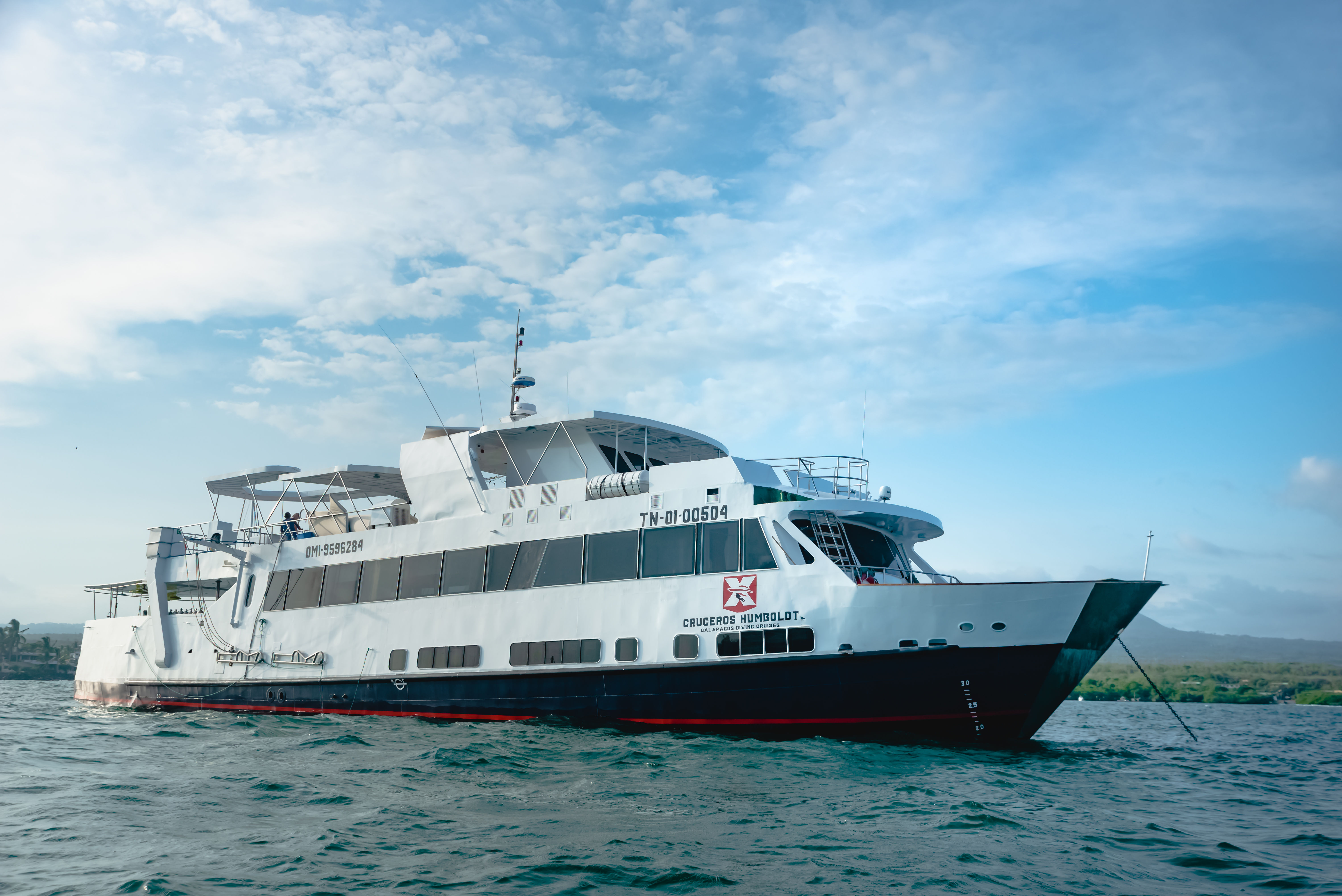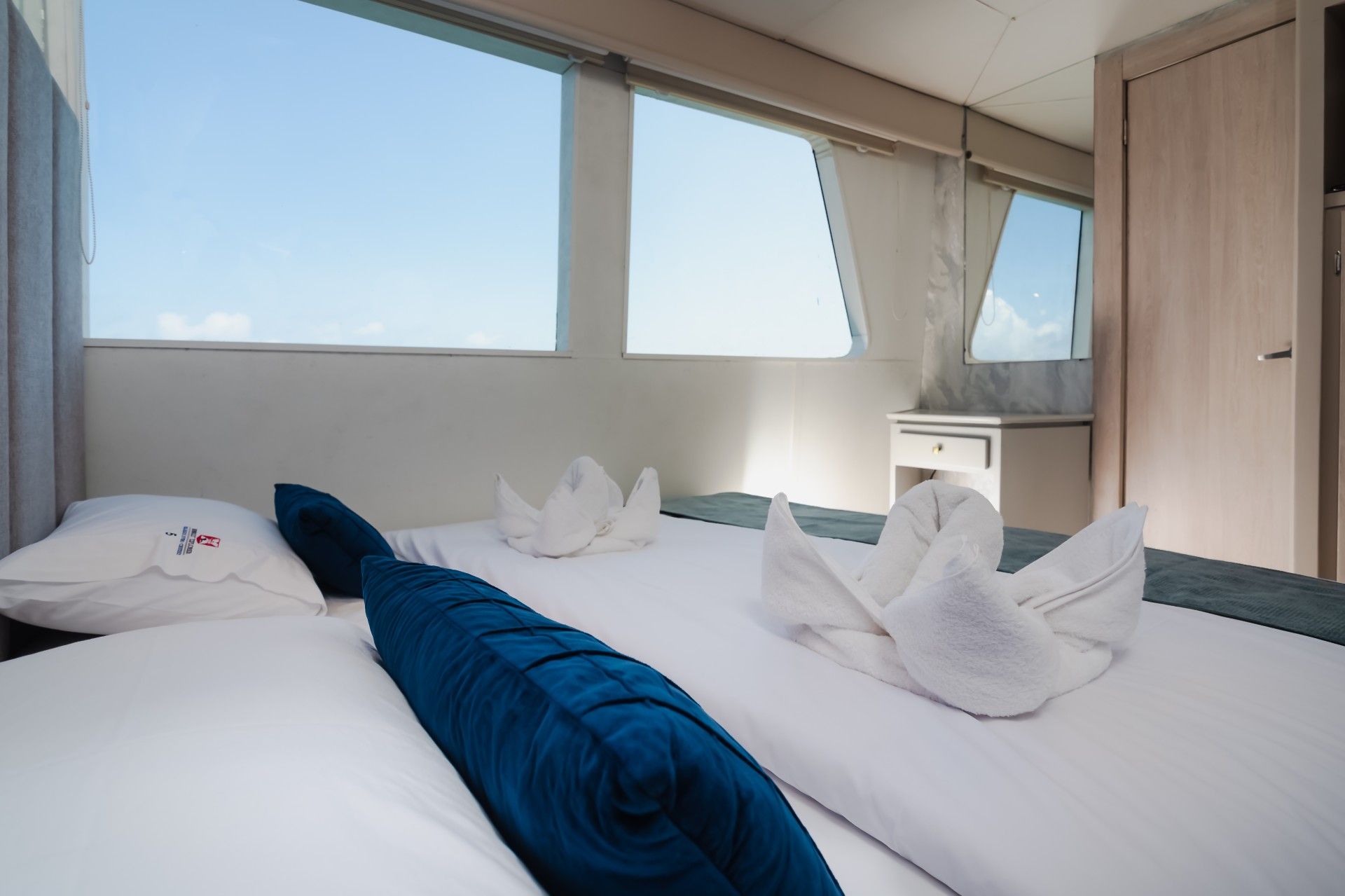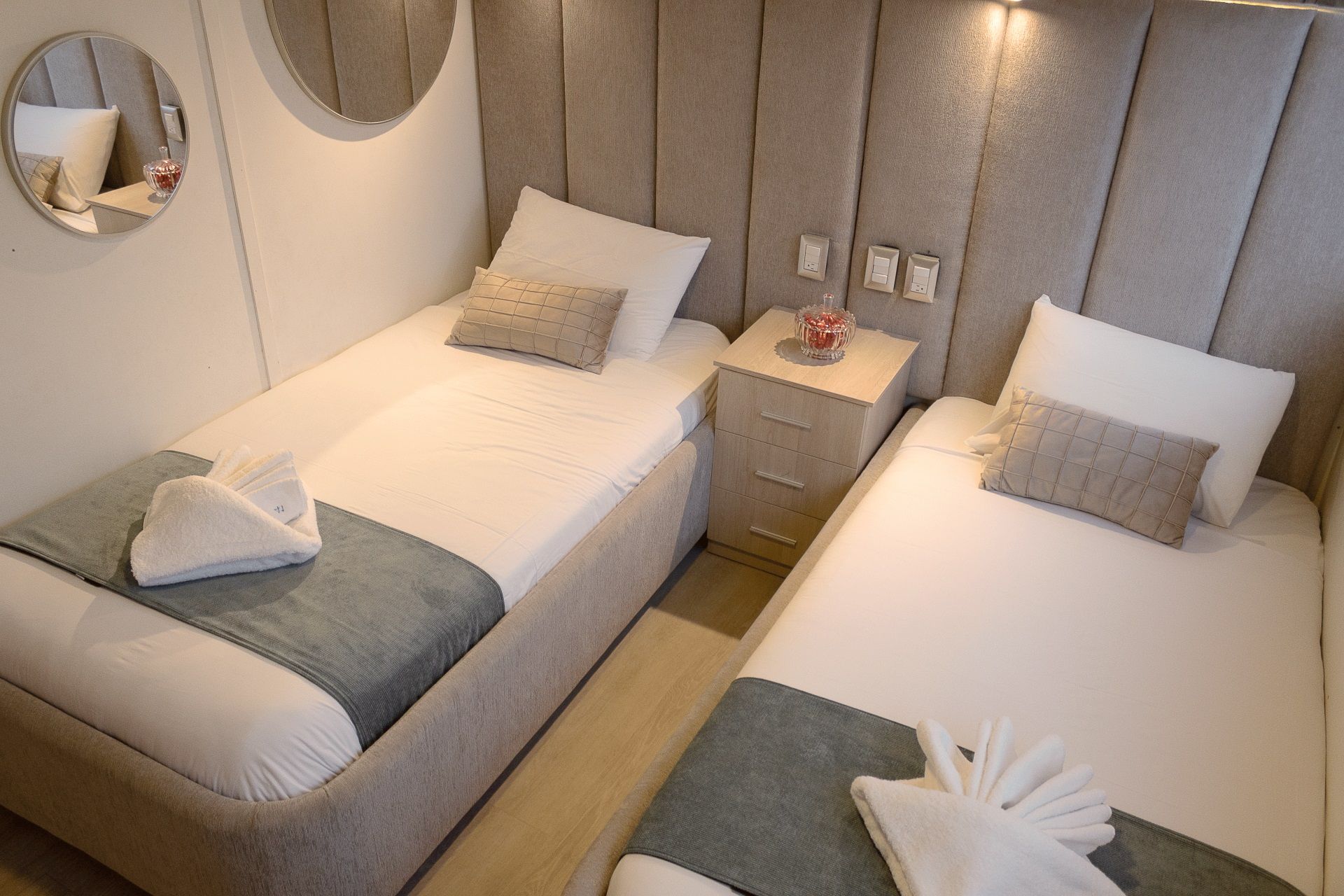日程安排
Day 1, Monday: Baltra
客人从厄瓜多尔大陆飞往加拉帕戈斯群岛,上午晚些时候到达。潜水向导将在上午11:00至12:00之间在机场迎接客人,并护送客人前往加拉帕戈斯船宿。客人将登船,享用午餐,整理设备并聆听安全简报。
Day 2, Tuesday: Baltra North (2次潜水)
- 设备检查。
- 7:00和10:00进行潜水
- 可见到的生物包括魟鱼与鱼群。
- 下午参观North Seymour陆地。沿着North Seymour Island的小径行走,可以看到蓝脚鲣鸟和军舰鸟的大群落。海狮和加拉帕戈斯海鬣蜥的出没也很常见。
- 出发前往北部岛屿(长时间行程)。
Day 3, Wednesday: Wolf Island (3-4次潜水)
- 10:30、14:00和16:30进行潜水。可能进行夜潜。
- 通常可见的生物包括双髻鲨、鲸鲨(Whaleshark)、鹰魟、海狮、加拉帕戈斯鲨和丝鲨。
- 夜间在Wolf Island抛锚。
Day 4, Thursday: Wolf Island (2次潜水)
- 6:30和9:30进行潜水
- 前往Darwin Island(2次潜水)
- 14:00和16:30进行潜水
- 通常可见的生物包括双髻鲨、红唇蝙蝠鱼(Red-lipped Batfish)、鹰魟、海狮、加拉帕戈斯鲨和丝鲨。
Day 5, Friday: Darwin Island (4次潜水)
- 6:30、10:30、14:00和16:30进行潜水
- 通常可见的生物包括双髻鲨、在适当季节时的鲸鲨(Whaleshark)、鹰魟、加拉帕戈斯鲨和丝鲨。
- 前往Wolf Island
Day 6, Saturday: Wolf Island (3次潜水)
- 6:30、9:00和11:00进行潜水
- 通常可见的生物包括双髻鲨、在适当季节时的鲸鲨(Whaleshark)、鹰魟、加拉帕戈斯鲨和丝鲨。
- 长时间前往Cousin's Rock(20+小时)
Day 7, Sunday: Cousin’s Rock (1-2次潜水)
- 6:30和9:30进行潜水(潜水次数取决于从Wolf Island的旅行时间)
- 这是很好的微距潜水,极有可能看到海马、海狮和鹰魟。在前往Santa Cruz(3小时)的途中享用午餐。通过巴士前往Santa Cruz高地,参观自然栖息地中的加拉帕戈斯巨龟。
- 自行游览Puerto Ayora镇和达尔文中心。在Puerto Ayora自行享用晚餐。
- 于晚上8:30返回Humboldt Explorer。
Day 8, Monday: Baltra
于上午9点前离开船宿。转乘前往机场。
海洋生物:加拉帕戈斯是世界上唯一的海鬣蜥和最北部生活的企鹅的家园。珊瑚床与海狗共享相同的水域。加拉帕戈斯是唯一的地方之一,在那里可以在离岸很近的地方看到远洋鱼类如金枪鱼、蝠鲼和双髻鲨。世界上没有其他地方能展示出如此多样的海洋生物形式。
此外,加拉帕戈斯的地质和生物过程帮助创造了相对于东太平洋其他海域的多样化栖息地。沿海地区包括垂直悬崖、沙滩、岩岸、红树林、珊瑚礁、礁湖和高盐度的盐田栖息地。海底山脉、高原、山脊和谷地为各种海洋生物群落提供了栖息地,而开阔的海洋水域则吸引了远洋鱼类的聚集。
请注意加拉帕戈斯潜水船宿行程仅供参考,并将根据当地法规、天气和船长的判断进行调整。目前,每周的行程包括相同的岛屿。然而,岛屿访问的顺序由加拉帕戈斯国家公园决定,可能每周有所不同。
 微信扫码添加人工客服
微信扫码添加人工客服


